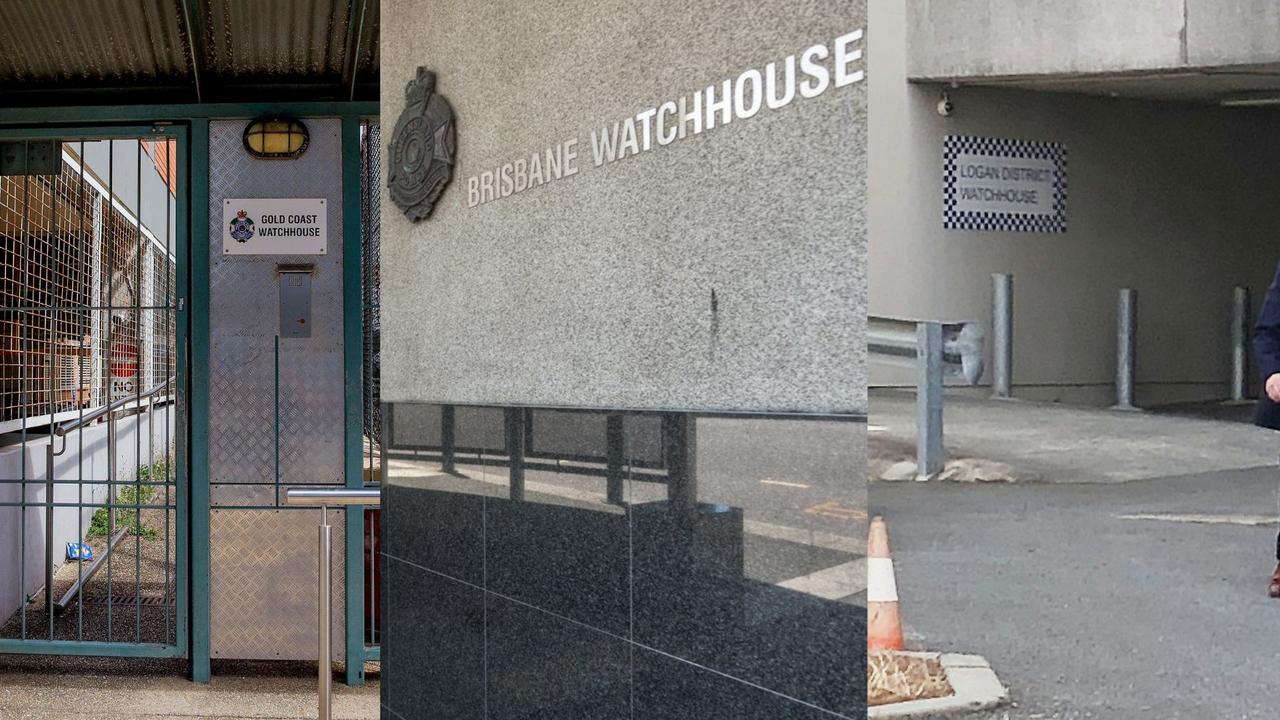“You have people who say it is a concrete jungle but it isn’t”
A detailed study of Gold Coast tree coverage has revealed some surprising findings, with some suburbs defying expectations. FULL LIST - SEE HOW YOUR SUBURB RATED

News
Don't miss out on the headlines from News. Followed categories will be added to My News.
A NEW tree study puts the lie to claims the Gold Coast is a concrete jungle, with ageing suburbs seeing a spike in green growth in the past decade.
The overall tree canopy cover within the urban footprint has increased from 27 per cent in 2009 to 32 per cent in 2018, according to a report presented to the city council planning committee.
THE GOLD COAST’S MOST DEADLY JUNCTIONS REVEALED
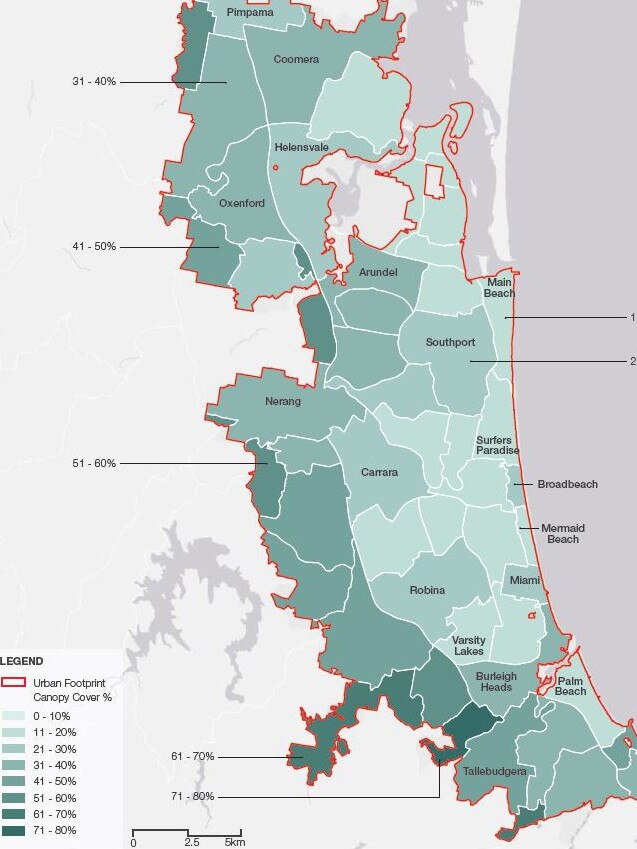
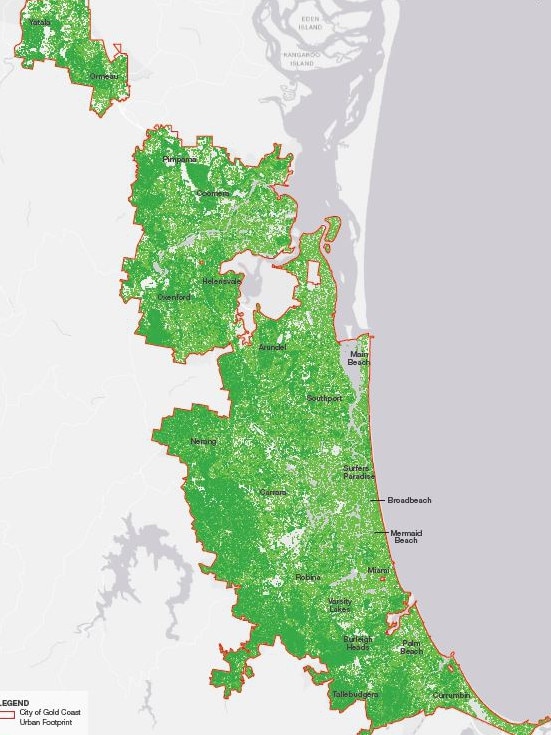
But there are massive differences in both the amount of trees and growth in suburbs.
Mapping provided as part of the report shows the highest canopy cover is in suburbs west of the Pacific Motorway, compared to areas in the east along the coast and floodplains.
In the past five years, Bonogin, Ormeau and Pacific Pines – which had been greenfield sites cleared for subdivision – have shown significant improvement.
But a case study that considered Palm Beach, Paradise Point, Miami and Biggera Waters confirmed fears about overdevelopment as housing blocks became developed for units and duplexes.
“It was found that additional dwellings in these locations have resulted in a larger proportion of the site being occupied by development, with no space left for trees,” the report said.
GOLD COAST UNI FAREWELLS ‘DEDICATED, DILIGENT CHAMPION’
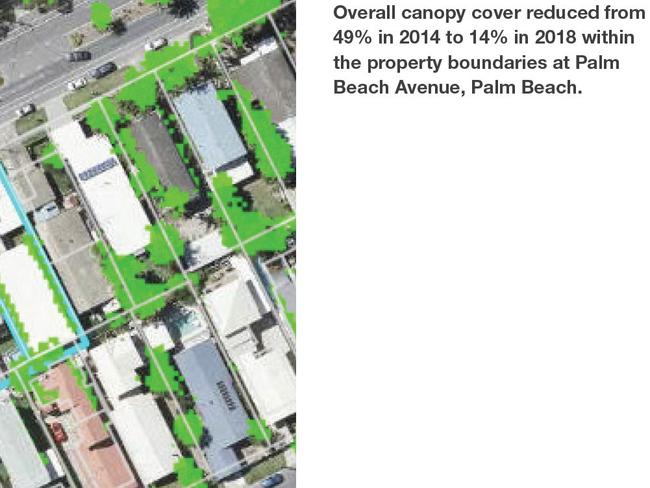
“Between 2014 and 2018 each study site showed a downward trend with tree canopy loss recorded within private property. For this same four-year time period, an increase in building site cover was also observed in aerial photography.”
Tallebudgera Valley had the highest canopy cover with 65 per cent, while Paradise Point was lowest at 13 per cent. Low lying suburbs like Varsity Lakes and Merrimac had reduced cover of about 19 per cent.
Northern-based councillor William Owen-Jones sought a suburb breakdown on LiDAR (light detection and ranging) mapping, which considered trees measuring 3-15 metres in height, and trees 15 metres and over.
From 2009 to 2018, the increases were: Oxenford 24 per cent to 33 per cent, Helensvale 18 per cent to 27 per cent and Hope Island 14 per cent to 20 per cent.
Across the city, most tree cover was within conservation reserves (79 per cent). Active travel routes had 23 per cent cover, residential areas 20 per cent and road reserves 20 per cent.
Councillors have backed a recommendation that establishes baseline canopy targets that will lead to tree-lined streets.
TRENDY ROOFTOP BAR’S EXCITING NEW TAKEOVER
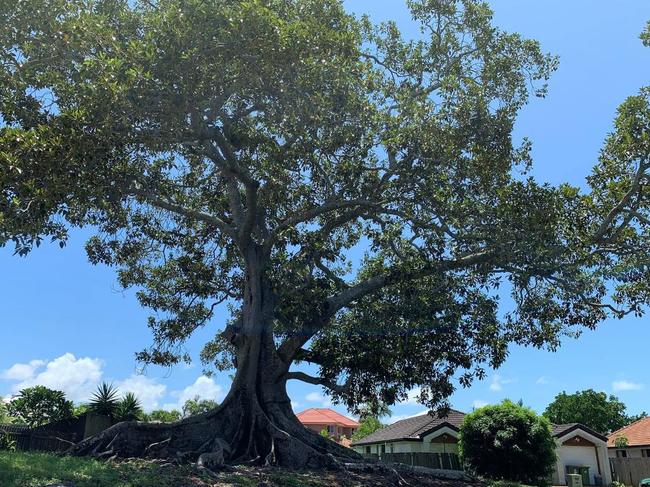
“Tree canopy contributes to urban cooling, improving health and well being, encourages walkability and provides economic benefits,” Cr Owen-Jones said.
“There has been a greening of our suburbs. You have people who say it is a concrete jungle, but it isn’t. It’s greening up.
“Helensvale is a classic example of development from the 1980s, and now 30 years later you have all of this canopy growth.”
Part of the reason was residents planting a mixture of natives and other trees, and the council encouraging developers to retain vegetation.
“The single largest tree planting project in our area has been at Regatta Waters where we have planted over 40,000 tube stock trees in the past four years,” Cr Owen-Jones said.
TREE CANOPY COVERAGE IN ALL GOLD COAST SUBURBS



